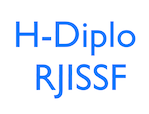In the aftermath of Russia’s full-scale military invasion of Ukraine in February 2022, Finland and Sweden applied for membership in the North Atlantic Treaty Organization (NATO). This constitutes the most fundamental security shift in the Baltic Sea region since the end of the Cold War. As members of NATO, the two Nordic neighbors will intensify…
Tag: NATO
H-Diplo|RJISSF Review Essay 92: Chiampan on Tardy, ed., The Nations of NATO
The Nations of NATO brings together an all-star team of NATO scholars to assess the state of the alliance on the eve of the February 2022 Russian invasion of Ukraine. Prominent questions, which have perhaps been over-explored regarding NATO’s cohesion and continued relevance in the post-Cold War era inspired, informed, and shaped the book’s thirteen…
H-Diplo|RJISSF Roundtable 15-21 on Hlatky, Deploying Feminism
The Women, Peace, and Security (WPS) Agenda, which was engendered by United Nations Security Council 1325, is now nearly a quarter-century old. Researchers have a solid evidence base on which to judge its implementation, and Stéfanie Von Hlatky’s work is part of a now-extensive research agenda on how it has evolved.[1] Specifically, Deploying Feminism speaks…
H-Diplo|RJISSF Article Review 164: Nielson on Bjørnsson, “Negotiating Armageddon”
H-Diplo | Robert Jervis International Security Studies Forum Article Review 164 Iben Bjørnsson, “Negotiating Armageddon: Civil Defence in NATO and Denmark, 1949-59,” Cold War History, 23:2 (2023): 217-238, DOI: https://doi.org/10.1080/14682745.2022.2123915 Reviewed by Aske Hennelund Nielsen, Friedrich-Alexander-University Erlangen-Nuremberg 16 November 2023 | PDF: http://issforum.org/to/JAR-164 | Website: rjissf.org | Twitter: @HDiplo Editor: Diane Labrosse | Commissioning Editor:…
H-Diplo|RJISSF Review Essay 82: James on Goldgeier & Shifrinson, eds., Evaluating NATO Enlargement
This interesting and important collections of essays on the enlargement of the North Atlantic Treaty Organization (NATO) and its consequences appeared at a historic moment, in the immediate aftermath of Russia’s full-scale attack of Ukraine on 24 February 2022.[1] It is a development—and to some extent an adjustment—of the papers that were published as a…
H-Diplo|RJISSF Roundtable 15-9 on Colbourn, Euromissiles
Given the uncertain fate of arms control today, and growing concerns about the ability of the United States to deter potentially two-peer nuclear weapons states, Susan Colbourn’s book on the Euromissile debate, deployment, and elimination is important, essential, and timely. Stephan Kieninger calls it “an outstanding achievement.” James Cameron agrees it is “an outstanding book…it…
H-Diplo|RJISSF Review Essay 79 on Goldgeier & Shifrinson, Evaluating NATO Enlargement
When James Goldgeier and Joshua Shifrinson first organized a symposium on the legacy of NATO enlargement in 2019, which led to the publication of a special issue of International Politics in 2020, the alliance’s purpose and future were being questioned on both sides of the Atlantic.[1] Former US President Donald Trump notoriously kept on deriding…
H-Diplo|RJISSF Roundtable 14-26 on Sarotte, Not One Inch
Not One Inch, Mary E. Sarotte’s excellent study of the origins of the expansion of the North Atlantic Treaty Organization (NATO) could not be timelier. Russia’s 2022 invasion of Ukraine brings to a head the debate over NATO enlargement that has been roiling since the end of the Cold War.
H-Diplo|RJISSF Policy Roundtable II-4: NATO’s Northern Enlargement: How Did It Happen, Where Will It Lead?
Since Russia launched its threat diplomacy towards Ukraine and the West, most clearly in December 2021 with the presentation of an ultimatum in the form of “draft agreements” between Russia on the one hand and NATO and the United States respectively on the other, this author was far from the only one to have predicted…
Article Review 151 on “The United States and the NATO Non-extension Assurances of 1990”
The November 1989 fall of the Berlin Wall ushered in myriad discussions about German reunification. In addition to questions about the domestic future of Germany, concerns over who would be responsible for Germany’s security and stability and with whom the new German state would ally persisted. Marc Trachtenberg revisits the February 1990 meeting wherein United…

